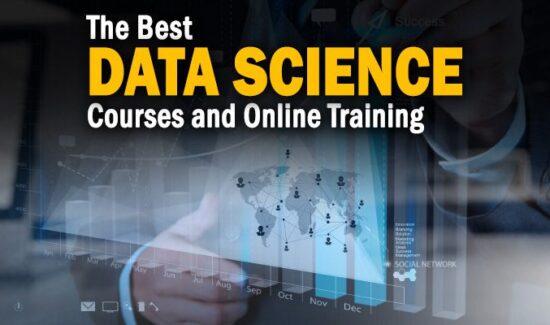The 8 Best Python Courses on edX to Consider for 2023


The editors at Solutions Review have compiled this list of the best Python courses on edX to consider for growing your skills.
 Python is an object-oriented programming language comparable to Perl, Ruby, Scheme and Java. It utilizes an elegant syntax that makes the programs you write easier to read, and it is ideal for prototype development and other ad-hoc tasks. Python comes with a large standard library that supports many common programming tasks as well, including connecting to web servers, searching text with expressions, and reading and modifying files. The language can be extended by adding new modules as well.
Python is an object-oriented programming language comparable to Perl, Ruby, Scheme and Java. It utilizes an elegant syntax that makes the programs you write easier to read, and it is ideal for prototype development and other ad-hoc tasks. Python comes with a large standard library that supports many common programming tasks as well, including connecting to web servers, searching text with expressions, and reading and modifying files. The language can be extended by adding new modules as well.
With this in mind, we’ve compiled this list of the best Python courses on edX and online training to consider if you’re looking to grow your data analytics skills for work or play. This is not an exhaustive list, but one that features the best Python courses on edX and training from trusted online platforms. This list of the best Python courses on edX below includes links to the modules and our take on each.
The Best Python Courses on edX
Python Basics for Data Science
OUR TAKE: This course is designed to get you started with Python as the programming language and provide a taste of how to start working with data in Python. Learners who successfully complete this IBM course can earn a skill badge.
Description: This Python course provides a beginner-friendly introduction to Python for data science. Practice through lab exercises, and you’ll be ready to create your first Python scripts on your own. You will learn about defining variables, the purpose of having functions in Python, sets and conditional statements, and more.
GO TO TRAININGProgramming for Everybody (Getting Started with Python)
OUR TAKE: The course has no pre-requisites and avoids all but the simplest mathematics. Anyone with moderate computer experience should be able to master the materials in this University of Michigan course.
Description: This course aims to teach everyone the basics of programming computers using Python. Instructors cover the basics of how one constructs a program from a series of simple instructions in Python. This course will cover Chapters 1-5 of the textbook Python for Everybody. Once a student completes this course, they will be ready to take more advanced programming courses. This course covers Python 3.
GO TO TRAININGComputing in Python I: Fundamentals and Procedural Programming
OUR TAKE: Learn the fundamentals of computing in Python, including variables, operators, and writing and debugging your own programs. By the end of this course, you’ll be able to write small programs in Python that use variables, mathematical operators, and logical operators.
Description: This course starts from the beginning, covering the basics of how a computer interprets lines of code; how to write programs, evaluate their output, and revise the code itself; how to work with variables and their changing values; and how to use mathematical, boolean, and relational operators. Structurally, the course is comprised of several parts.
GO TO TRAININGUsing Python for Research
OUR TAKE: This course bridges the gap between introductory and advanced courses in Python using a combination of a guided introduction and more independent in-depth exploration.
Description: While there are many excellent introductory Python courses available, most typically do not go deep enough for you to apply your Python skills to research projects. In this course, after first reviewing the basics of Python 3, students learn about tools commonly used in research settings. This version of the course includes a new module on statistical learning.
GO TO TRAININGAnalyzing Data with Python
OUR TAKE: You will go from understanding the basics of Python to exploring many different types of data through lectures, hands-on labs, and assignments. Learners who successfully complete this IBM course can earn a skill badge
Description: In this course, you will learn how to analyze data in Python using multi-dimensional arrays in numpy, manipulate DataFrames in pandas, use SciPy library of mathematical routines, and perform machine learning using scikit-learn! You will also learn how to prepare data for analysis, perform simple statistical analyses, create meaningful data visualizations, and predict future trends.
GO TO TRAININGMachine Learning with Python: A Practical Introduction
OUR TAKE: You’ll learn about supervised vs. unsupervised learning, look into how statistical modeling relates to machine learning, and do a comparison of each. Learners who successfully complete this IBM course can earn a skill badge.
Description: Machine Learning can be an incredibly beneficial tool to uncover hidden insights and predict future trends. This Machine Learning with Python course will give you all the tools you need to get started with supervised and unsupervised learning. Get ready to do more learning than your machine!
GO TO TRAININGScripting with Python
OUR TAKE: This Southern New Hampshire University online course will help you explore fundamental programming with hands-on activities to build applications using Python. The training takes roughly 16 weeks to complete.
Description: This is the first course in the introductory, undergraduate-level offering that makes up the larger Business Analytics Foundations and Data Management with Python and SQL MicroBachelors programs. After taking this class, you will be able to write Python scripts with confidence using best practices and coding standards.
GO TO TRAININGVisualizing Data with Python
OUR TAKE: This training will show you how to present data using some of the data visualization libraries in Python, including Matplotlib, Seaborn, and Folium. Learners who successfully complete this IBM course can earn a skill badge.
Description: Data visualization is the graphical representation of data in order to interactively and efficiently convey insights to clients, customers, and stakeholders in general. This IBM training will show you how to use specialized visualization tools, like pie charts, box plots, scatter plots, and bubble plots, and how to use advanced visualization tools, including waffle charts, word clouds, and Seaborn and regression plots.
GO TO TRAININGSolutions Review participates in affiliate programs. We may make a small commission from products purchased through this resource.



































